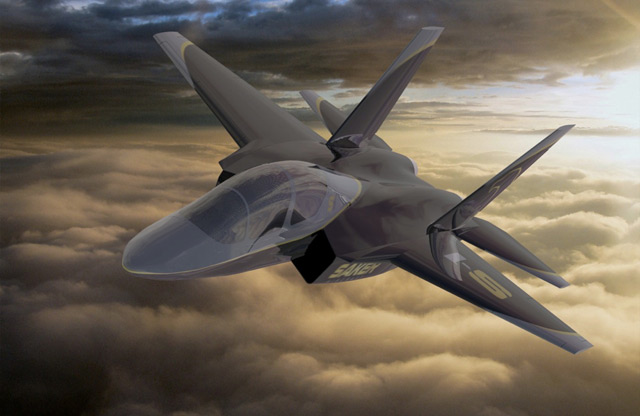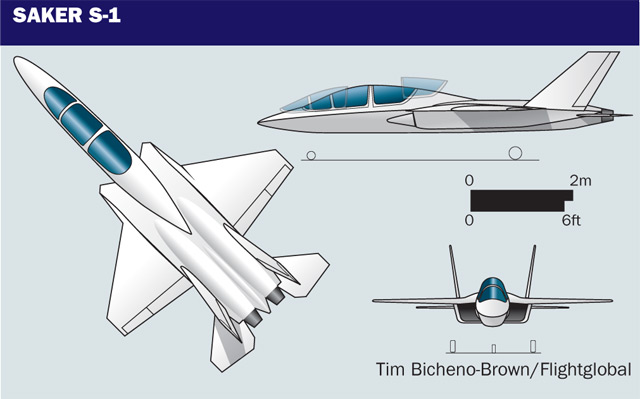Aviation startup Saker Aircraft is pitching a new light twin-engined two-seat personal jet for customers who want to combine efficient point-to-point travel with a bit of fun, in the form of its nascent S-1 design.
"Saker Aircraft is trying to capture the market for a small, unique, fast and cost-effective business jet," says company chief executive officer Sean Gillette, a recently retired US Air Force pilot.
The S-1 had its preliminary engineering design completed by Dave Fawcett, president of Airboss Aerospace, who previously designed the ill-fated ATG Javelin personal jet. Like the Javelin, the S-1 looks more like an advanced jet trainer or small fighter than a civilian business jet - sharing a platform that bears a superficial resemblance to the Boeing F-15 or Lockheed Martin F-35.
Gillette says, however, that although the two designs share a common heritage, Saker's S-1 is a completely new design. "It's a clean-sheet design," Gillette says. "We made sure of that."
In fact, Gillette says, he reviewed a number of engineering firms before settling on Airboss. Now, with the preliminary design complete, the company has started to do some detailed design work, Gillette says. However, until the company secures more investors, the project's progress will be slow.
 |
|---|
Saker Aircraft |
 |
"We've decided to slow down the engineering aspect of it and focus more on obtaining funding to further our process," Gillette says. "We feel fairly confident that we're getting close to securing that funding before the rest of the engineering testing and certification."
When the S-1 makes it through certification to production, Gillette expects the aircraft will be able to fly at a maximum speed of Mach .99, with a cruise speed of M0.95. Powered by a pair of Williams FJ44-4 turbofans, the aircraft is expected to have a thrust to weight ratio of 0.7 and a climb rate of 12,000ft/min (60m/s). The S-1's service ceiling would be about 45,000ft (13,700m). It also has a positive 7g limit and can pull -3g.
Gillette notes that there is no contract with Williams just yet, although the jet was designed with the FJ44-4 engine in mind. He has, however, had conversions with the engine-maker, he says.
The S-1, which will have an empty weight of 5,500lb (2,490kg) and maximum take-off weight of 11,500lb, has an internal fuel volume of 1,893 litres (500 USgal) giving it a range of 1,390nm (2,570km). It is also expected to carry another 757 litres of fuel externally, giving it a range of 1,911nm with the external tanks.
The company will test a number of prototypes in the coming years, Gillette says, but adds that he cannot commit to firm dates yet. Gillette says the company has learned a lot from the experiences of the Aviation Technology Group and its Javelin and hopes to avoid any missteps that company might have made.
That is why, Gillette says, he is being deliberately conservative in all of his cost, schedule and performance expectations and is avoiding making promises that cannot be kept.
"Once you commit to a number, people hold you to that," he says. "We are stating we have some work to do."
Source: Flight International



















